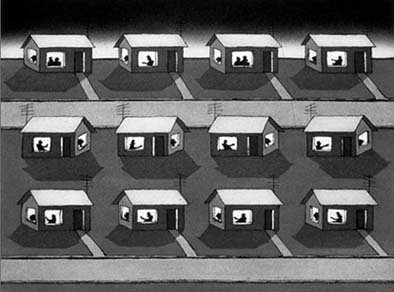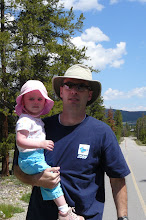reflection image 3 - the courage to be
Sunday, November 20, 2005 by niebuhrian
The Courage to Be is the title to a book written by Paul Tillich, it is also part of what I see in this photo. How many of us truly have the courage to be who we are? Whether our lives are filled with the rain showers of doubt or the blossoms of growth, do we every feel as though we truly have the courage, the will to move beyond the facades we create and truly live?
I was about twelve or thirteen when I lost what little courage I had. It is amazing what I allowed others to take from me, destroying a burgeoning self-concept. I spent a number of years stomping that fledgling self into submission, catering to the will of others; all in the service of building a façade that placated rather than challenged others.
I will be the first to admit that my challenges are small compared to those that others face. I don’t have to face racism constantly, nor am I put down because of my gender. I don’t have to face “coming out” to family and friends and the fear, misunderstanding and hatred that occurs. I don’t have to face discrimination, except for that which occurs within my soul.
It is abusive, what we do to others and what we often do to ourselves. We highlight differences and exploit perceived weaknesses. We chose to separate by not choosing careful words when we speak to one another. Pain is prevalent because pride and power are pervasive. When I pretend to know something and I make it a law unto myself, then I rob you of the power we might share in a relationship. When I do it enough, I am nothing more than a master at the manipulation of my internal and external worlds.
The courage to be means giving you the courage to be as well. It means hearing your stories as a way of knowing who you are, not as a means for gaining the upper hand. It means equality in the way I relate to you. By making room for your courage to be, I make room for me to grow as well.
For better or worse, we sometimes become reflections of what we think others see in us. I am more apt to believe in myself when others believe in me and vice versa. However, at some point we must develop a “bullshit filter.” That is, we must construct a lens whereby we can detect the messages we receive from others and decide whether they hold some truth for us. It is not enough to merely recognize falsehoods. If impressions are false, we must then have the courage to say so and right what wrongs we see.
I wonder what lies beneath all of the piercings and tattoos. I wonder what story each of them tells. If they could talk what narratives would they tell? A lot of pain has gone into this image. Each hole, each tattoo is accompanied by pain that cannot be avoided. Pain, and I imagine beauty as well…
grace and peace



